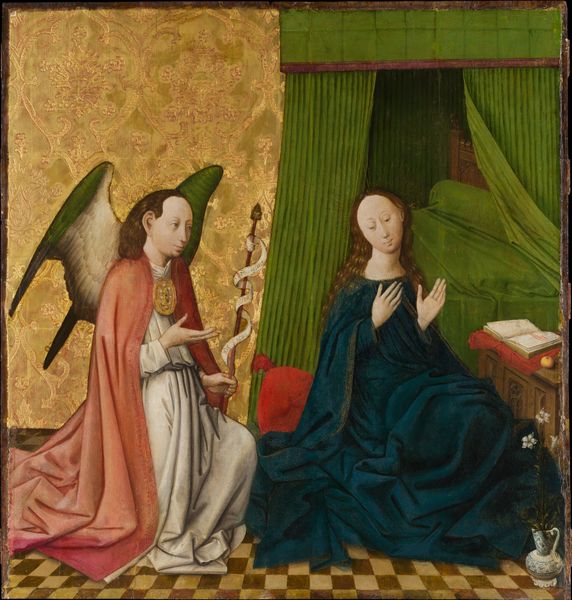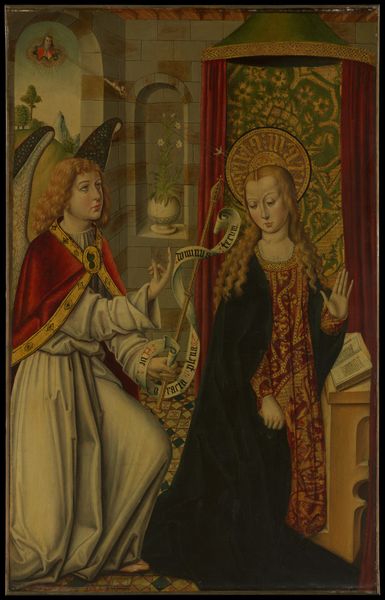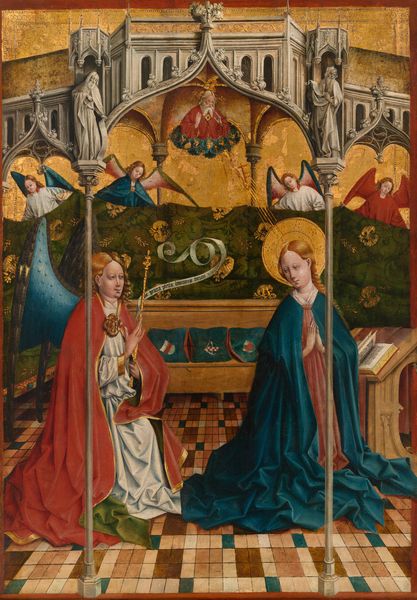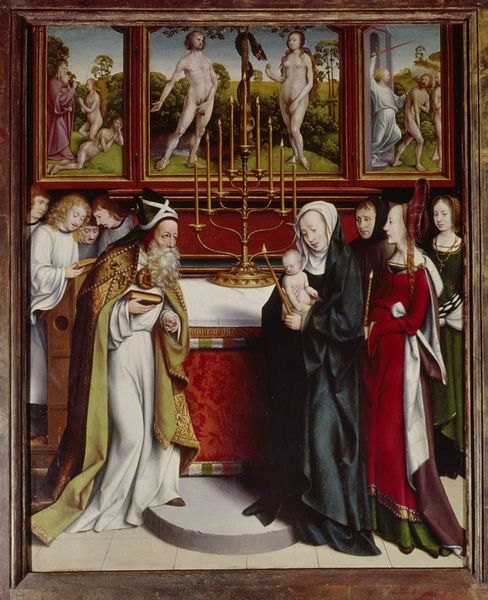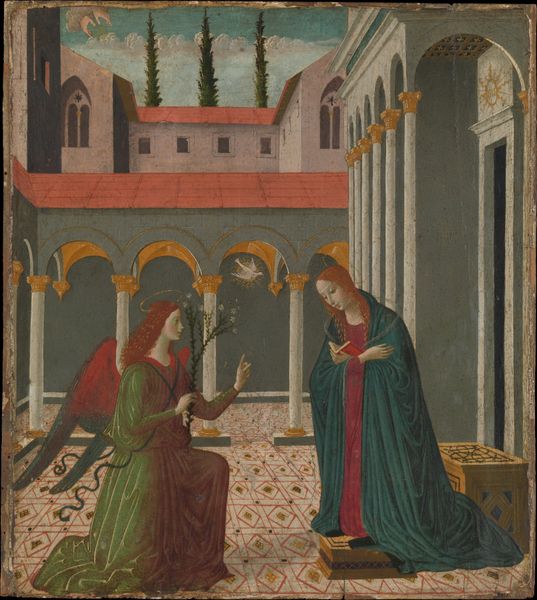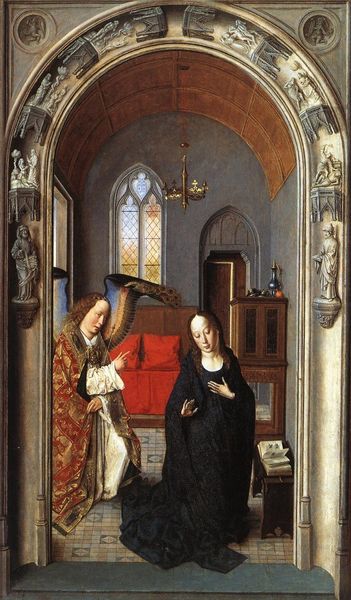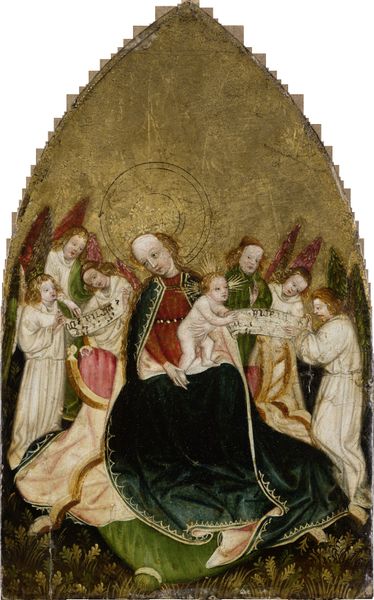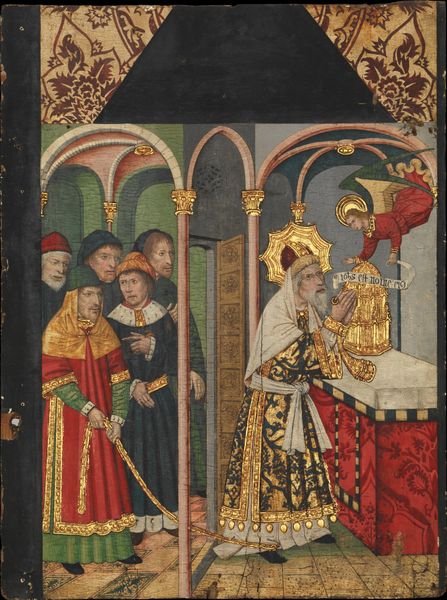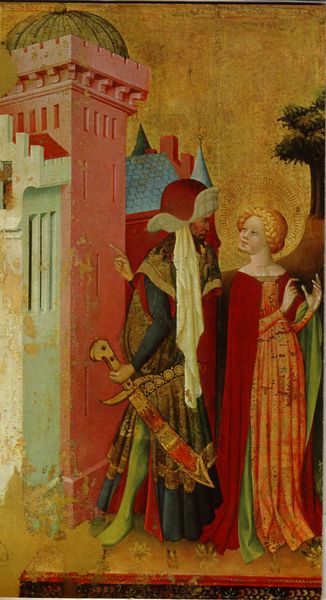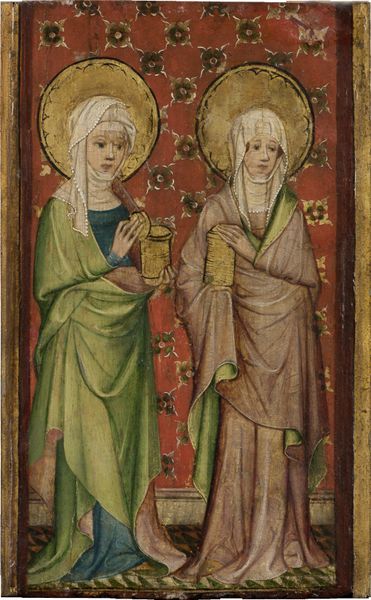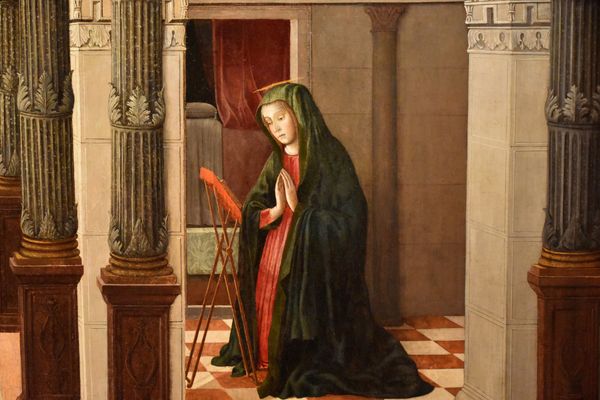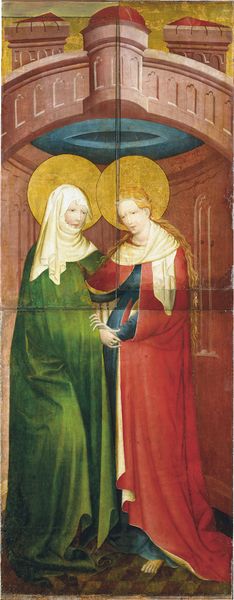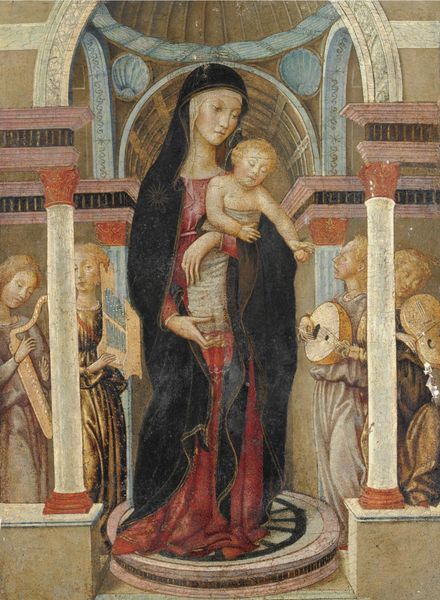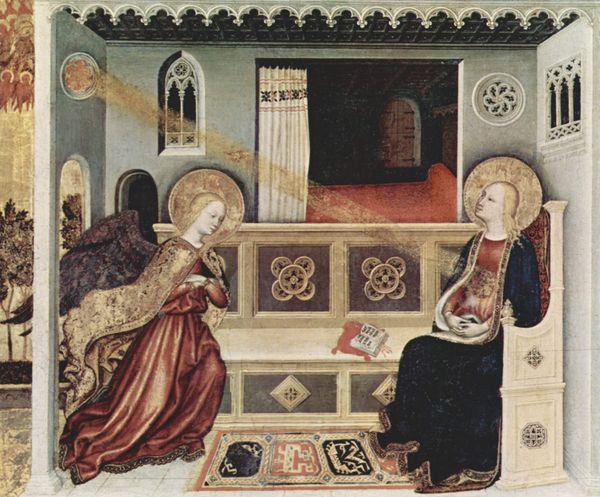
tempera, painting
#
portrait
#
tempera
#
painting
#
figuration
#
early-renaissance
Dimensions: support height 62.4 cm, support width 48.3 cm, support height 61.0 cm, support width 46.2 cm
Copyright: Rijks Museum: Open Domain
Curator: This is "Geertruy Haeck Kneeling in Prayer before Saint Agnes," an Early Renaissance tempera on panel painting from about 1465, created by an anonymous artist. Editor: The light in this panel! It feels almost dreamlike, the way it softens the edges of everything. And that lamb... isn't it wonderful? There's an earnest quality, both innocent and surreal. Curator: The artist’s handling of materials interests me. Look closely at the panel itself. The early Renaissance relied heavily on egg tempera and gilding to produce such a sheen, yet the depiction of textiles speaks volumes about societal consumption. Consider Geertruy Haeck's devotion staged against luxury items. Editor: Staged, exactly. It does feel constructed, deliberately symbolic. I'm drawn to the pattern on the floor; the repeating design feels like it's pulling me into the image, a little like peering into Geertruy Haeck's devout world, as you pointed out, filled with devotion and worldly things all at once. And, of course, St. Agnes with her beatific calm. She almost doesn't acknowledge the presence of the kneeling woman, more intent on the...well, that's one fluffy lamb. Curator: Yes, consider the economic structures, of even anonymous devotional works like this one. Gilding alone signified access to specific guilds, pigments had costs related to trade routes; therefore even displays of piety were, fundamentally, rooted in material exchange. Editor: Do you think Geertruy was painted from life? There's a striking immediacy to her features. It makes you wonder about her lived reality—about how all of this luxury intertwined with, or even influenced, her spiritual life. That earnest piety coupled with an understanding of status—what a curious pairing! Curator: Such artistic patronage allowed women in the middles ages to commission artwork displaying power or importance, but moreover helped to advance artistic progress using valuable pigments and labor that was not previously attainable. Editor: So, viewing the painting itself becomes a lens through which to explore the material circumstances of its creation. It is humbling to see a 15th-century display of human creativity tied to very concrete exchanges of resources. Curator: Indeed. Viewing such work helps in grasping art not only for its spiritual qualities but the vast means for which creation can be displayed with materiality. Editor: Beautifully put! Thanks for illuminating the ways in which devotion becomes indelibly linked with materiality; for bringing the dreamlike tones down to Earth.
Comments
Join the conversation
Join millions of artists and users on Artera today and experience the ultimate creative platform.
rijksmuseum about 2 years ago
⋮
This painting is a ‘memorial tablet’, intended to honour the memory of a deceased person. It probably hung near the tomb of Geertruy Haeck-van Slingelandt van der Tempel in the church of the convent of Saint Agnes in Dordrecht. Geertruy kneels in prayer in front of St. Agnes. Although Geertruy was not herself an ordained nun, she is dressed in a nun’s habit as a sign of her piety.
